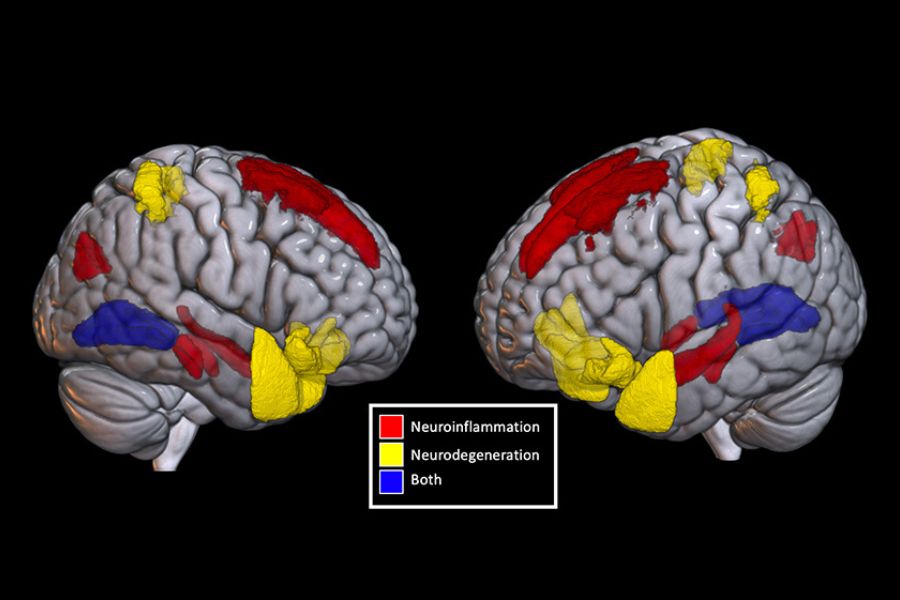
Brain activity recorded by electroencephalography on a normal subject in Dr. Robert Chen’s lab.
Dr. Robert Chen is a Professor of Medicine (Neurology) at the University of Toronto and a Senior Scientist at the Krembil Brain Institute. As part of his work within the Edmond J. Safra Program in Parkinson’s Disease at the Morton and Gloria Shulman Movement Disorders Clinic, Toronto Western Hospital, he is conducting innovative research studies into ‘freezing of gait’, a common symptom of Parkinson’s disease and other movement disorders.
Freezing of gait is a debilitating condition where individuals experience short, shuffling steps, or a complete lack of movement when they try to walk. Levodopa, a chemical-building block in the brain that is converted into dopamine, is commonly used to treat these freezing episodes, as it replaces depleted levels of dopamine and helps improve movement in patients with Parkinson’s. However, when the effects of medication wears off, patients have increased difficulties walking and are more prone to falls. Sometimes freezing of gait occur even when the medications are working, making it a condition that is difficult to treat. Nearly half of all patients with Parkinson’s disease have experienced freezing of gait at some point – however, it is not always noticeable during a visit to a physician.
Dr. Chen is working with Julianne Baarbé, a doctoral candidate at the Krembil Brain Institute, to examine how to identify freezing episodes during a patient’s clinic visit, and how the brain turns ‘on’ or ‘off’ to control this symptom. Patients in the Movement Disorders Clinic who opt-in to this study are asked to undergo a walking assessment using virtual reality technology to simulate walking down a virtual hallway. During this test, patients are seated and press foot pedals to navigate down the hallway, while their movements are recorded and analyzed. This study investigates gait patterns by measuring the number of times the foot pedals were pressed, and compares freezing episodes to when subjects are asked to stop moving voluntarily. During freezing episodes, brain activity is also measured by using electroencephalography and magnetic resonance imaging.
Preliminary findings show a unique pattern of brain activity when patients experienced freezing episodes when walking in a virtual reality setting compared to voluntary stopping. This activity was noticed in areas of the brain that process movements and sensory input. Ongoing research in this area will benefit patients as doctors will be able to better diagnose freezing of gait, which will help inform different treatment options so individuals will be able to manage their symptoms. The findings will help researchers determine dysfunctions of which brain areas cause freezing of gait so that future treatments can be directed to these areas.


